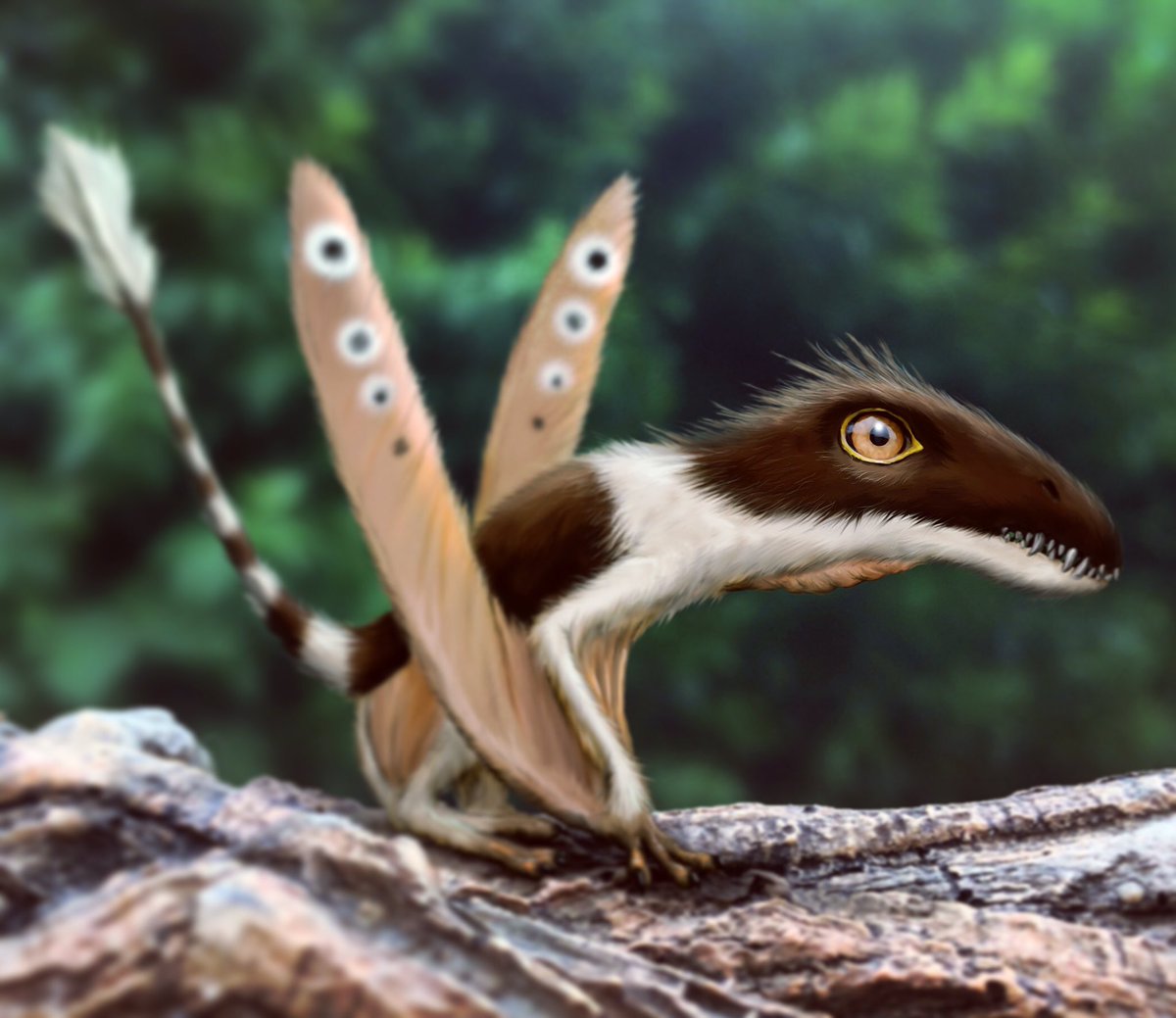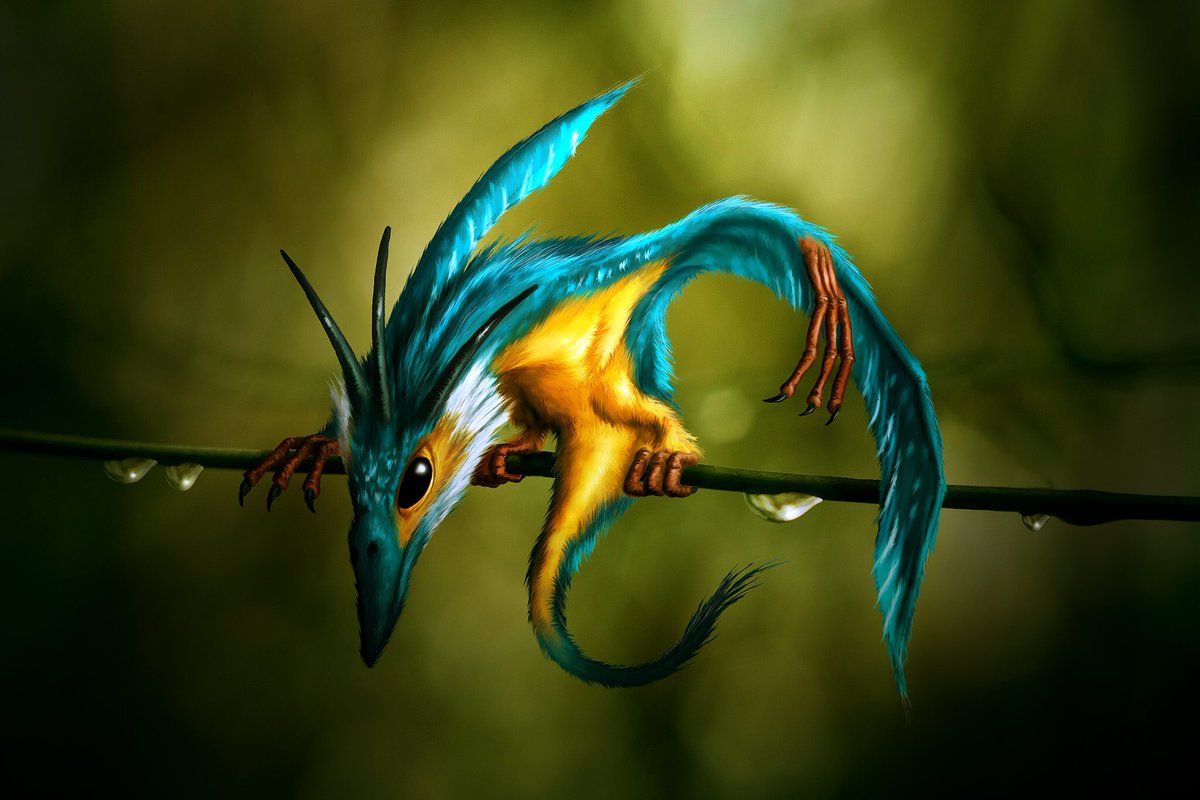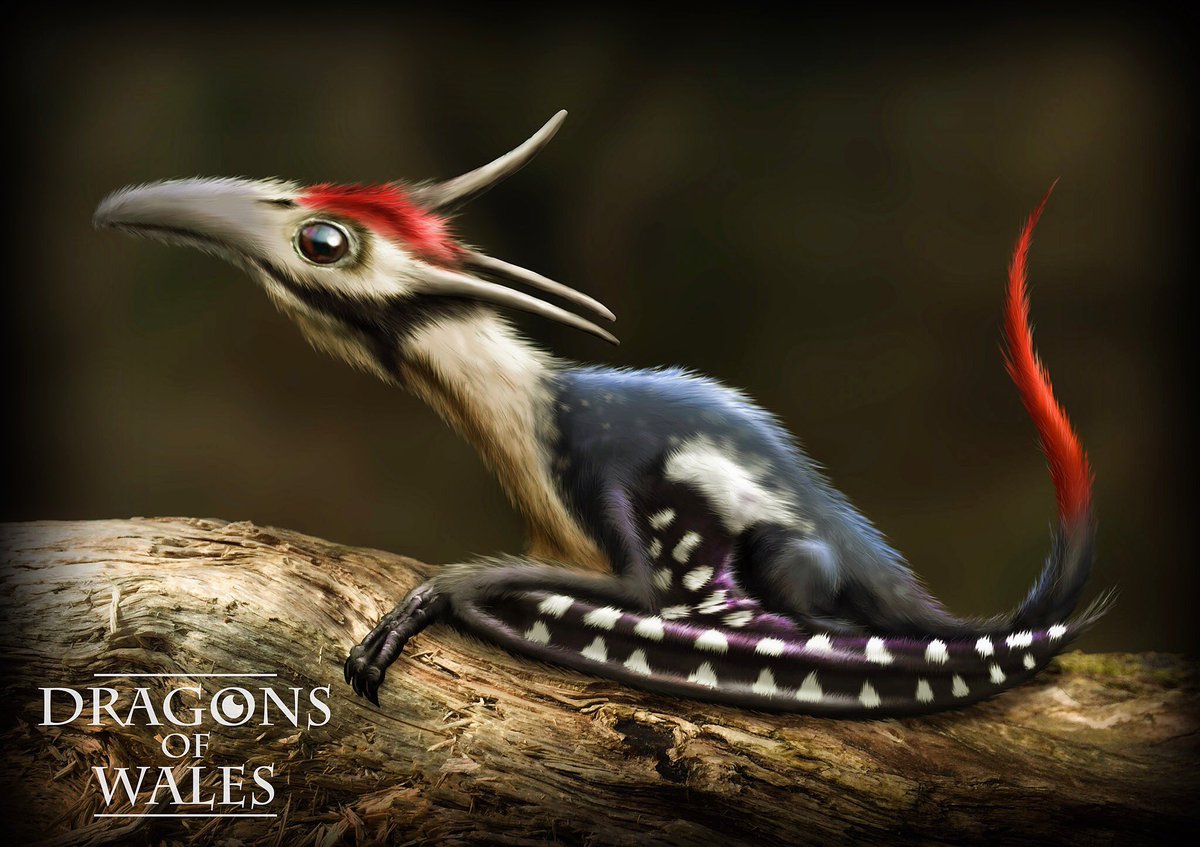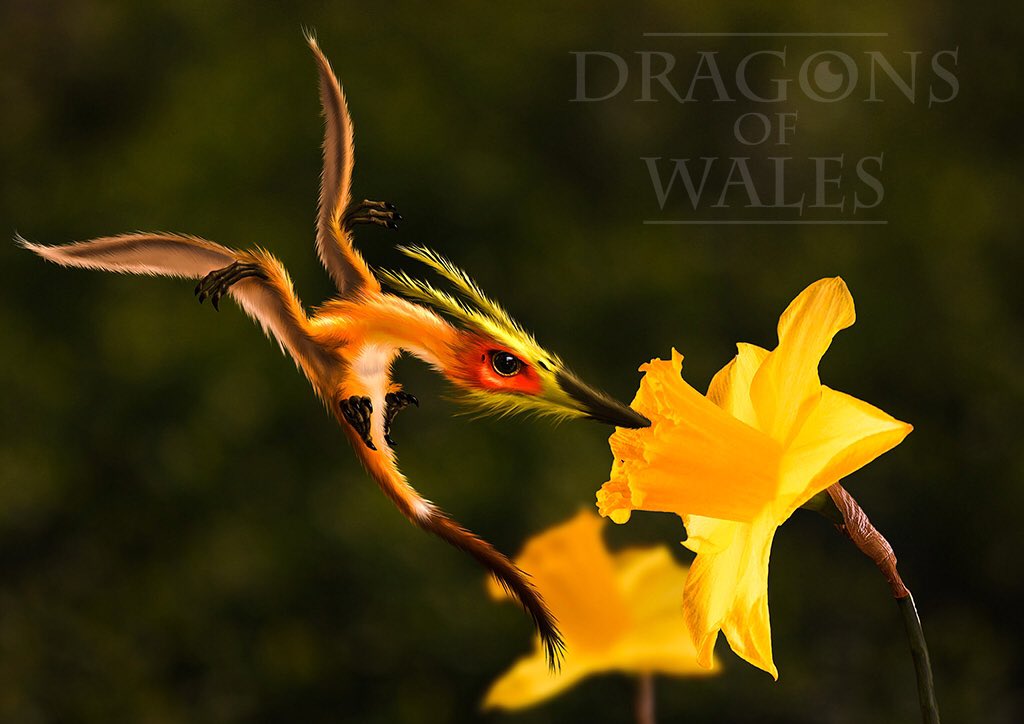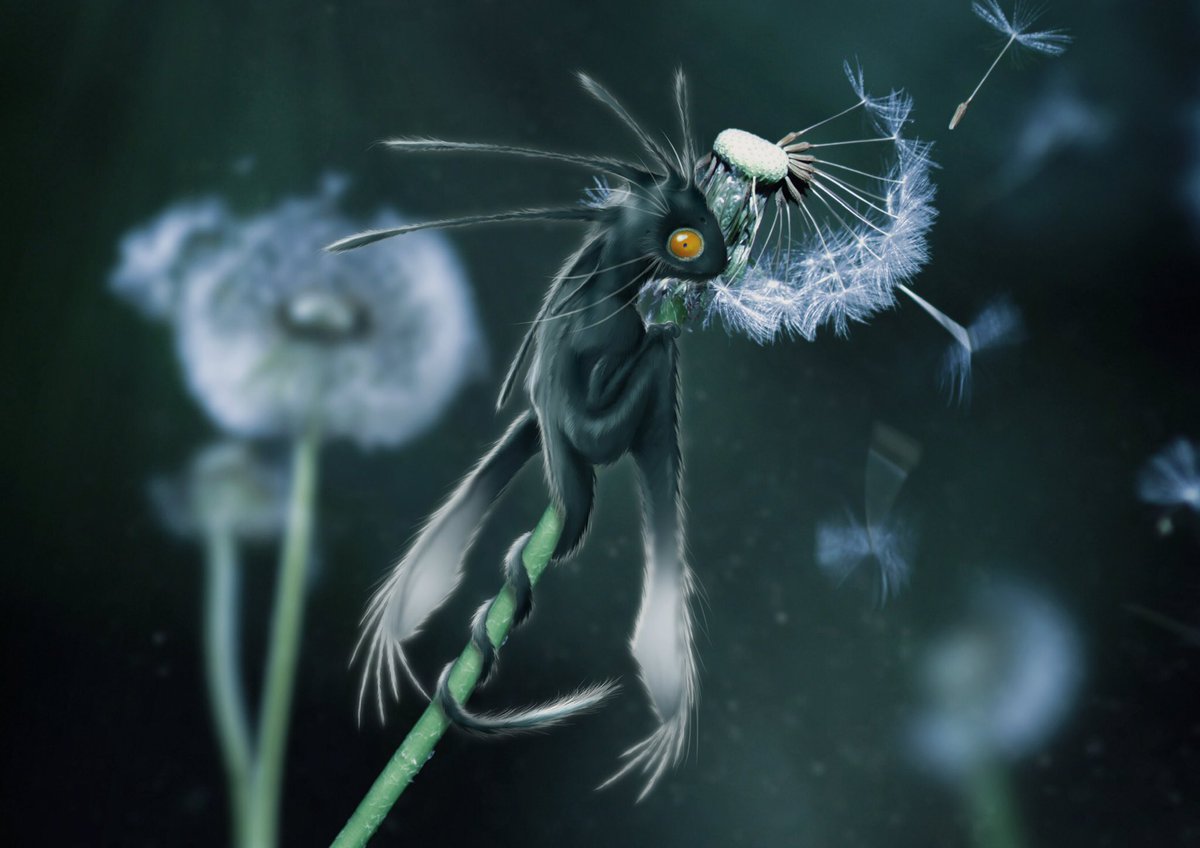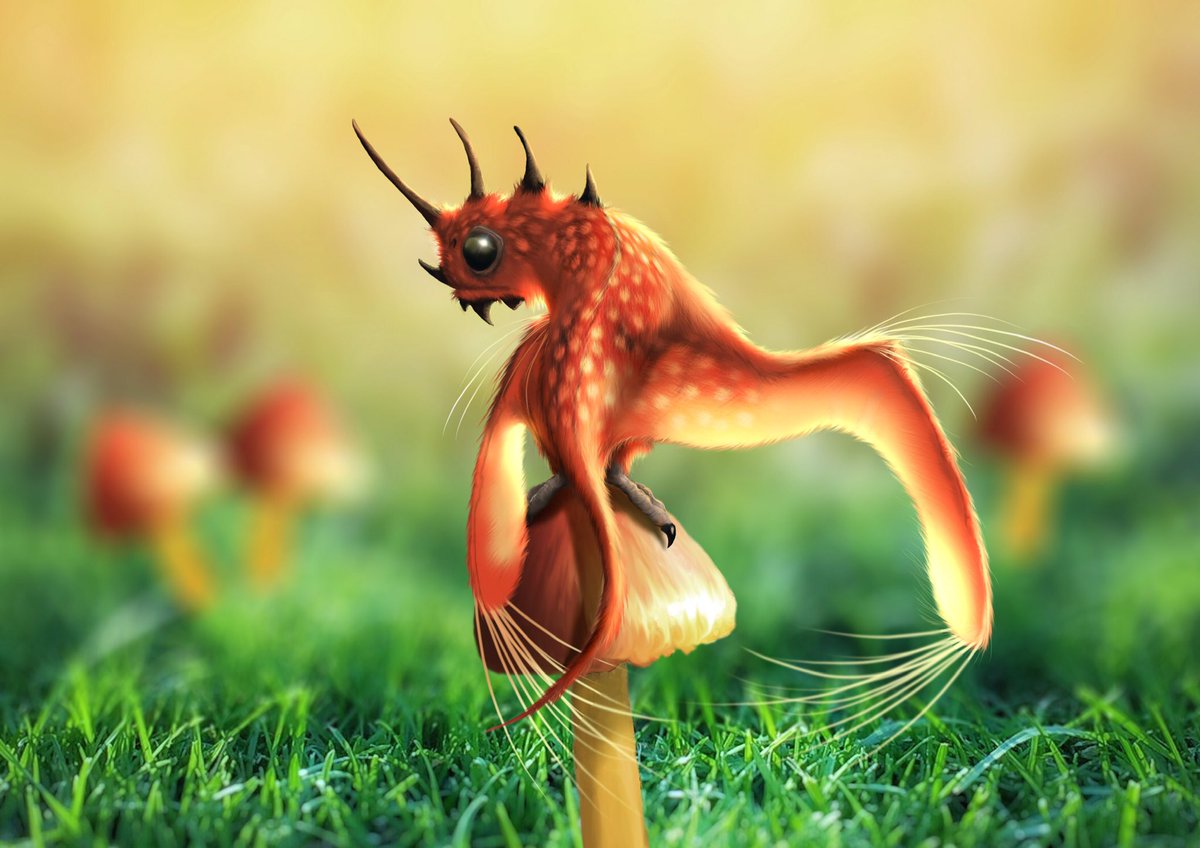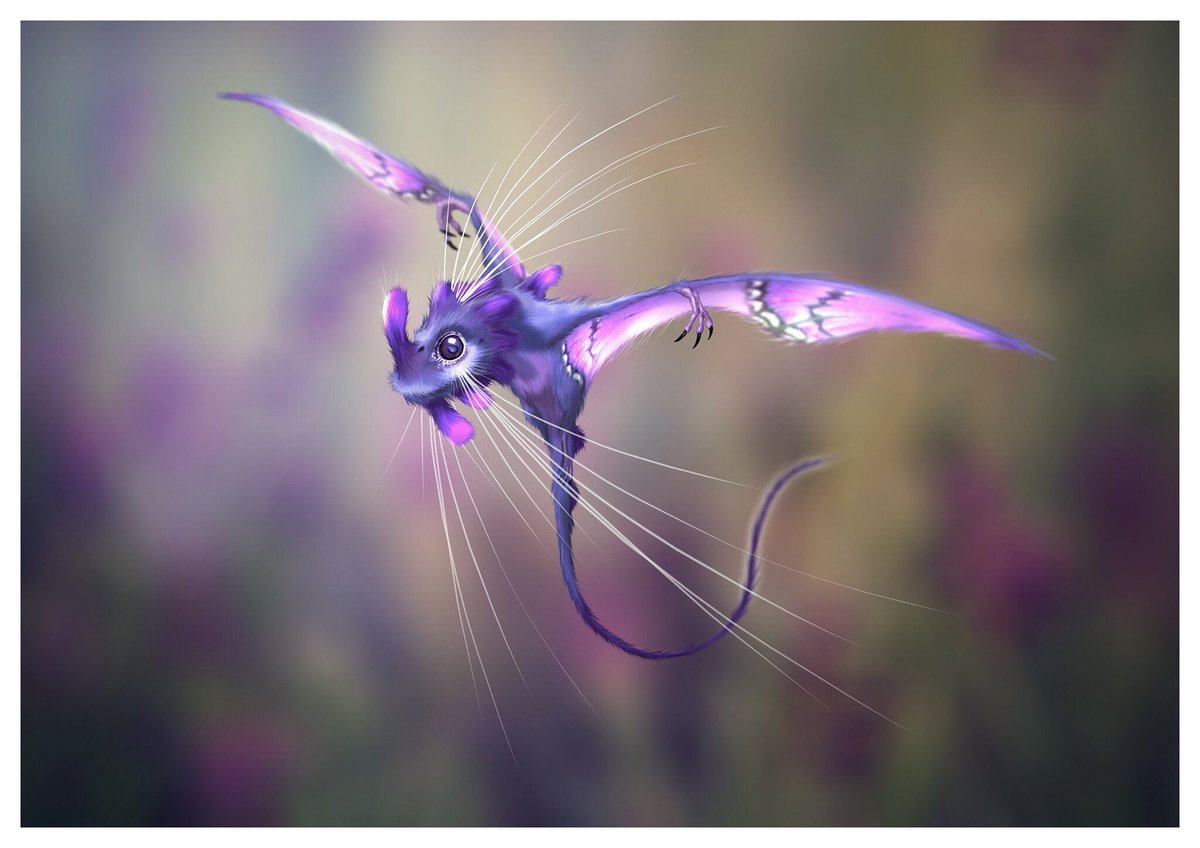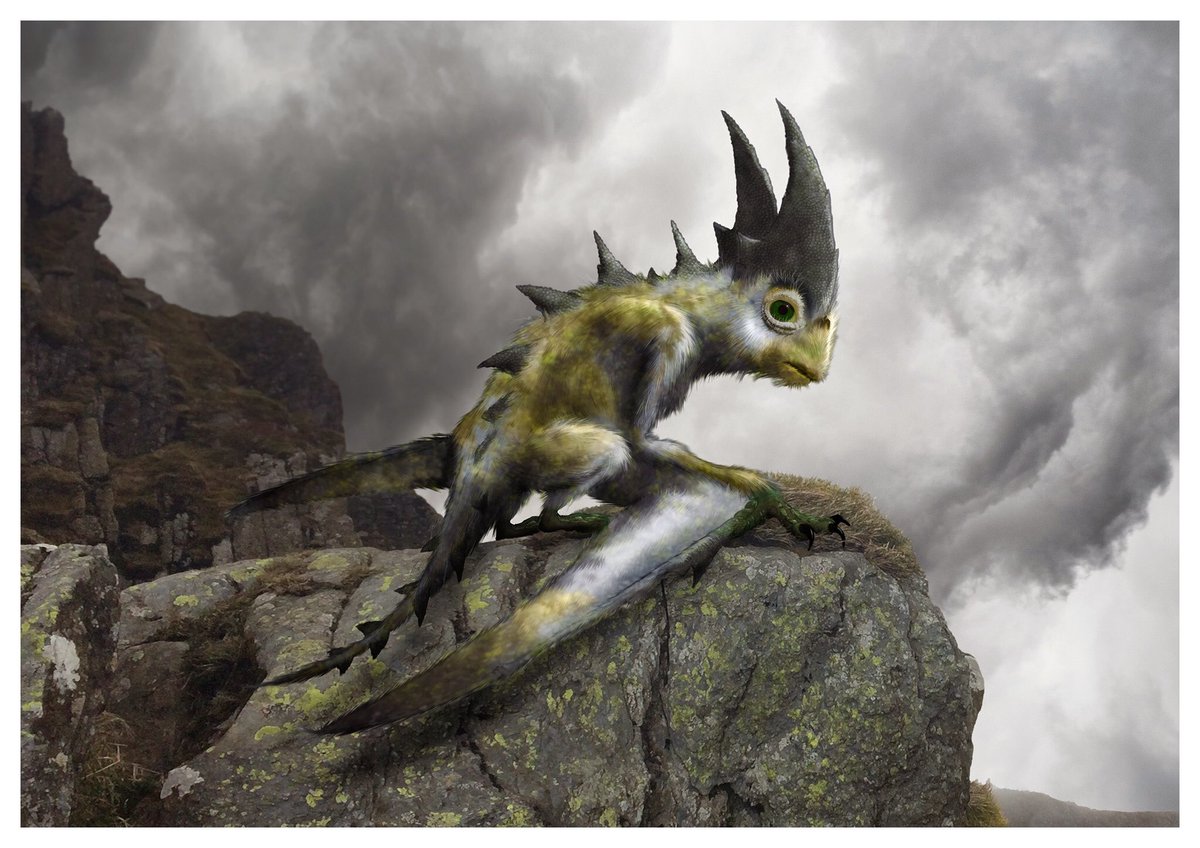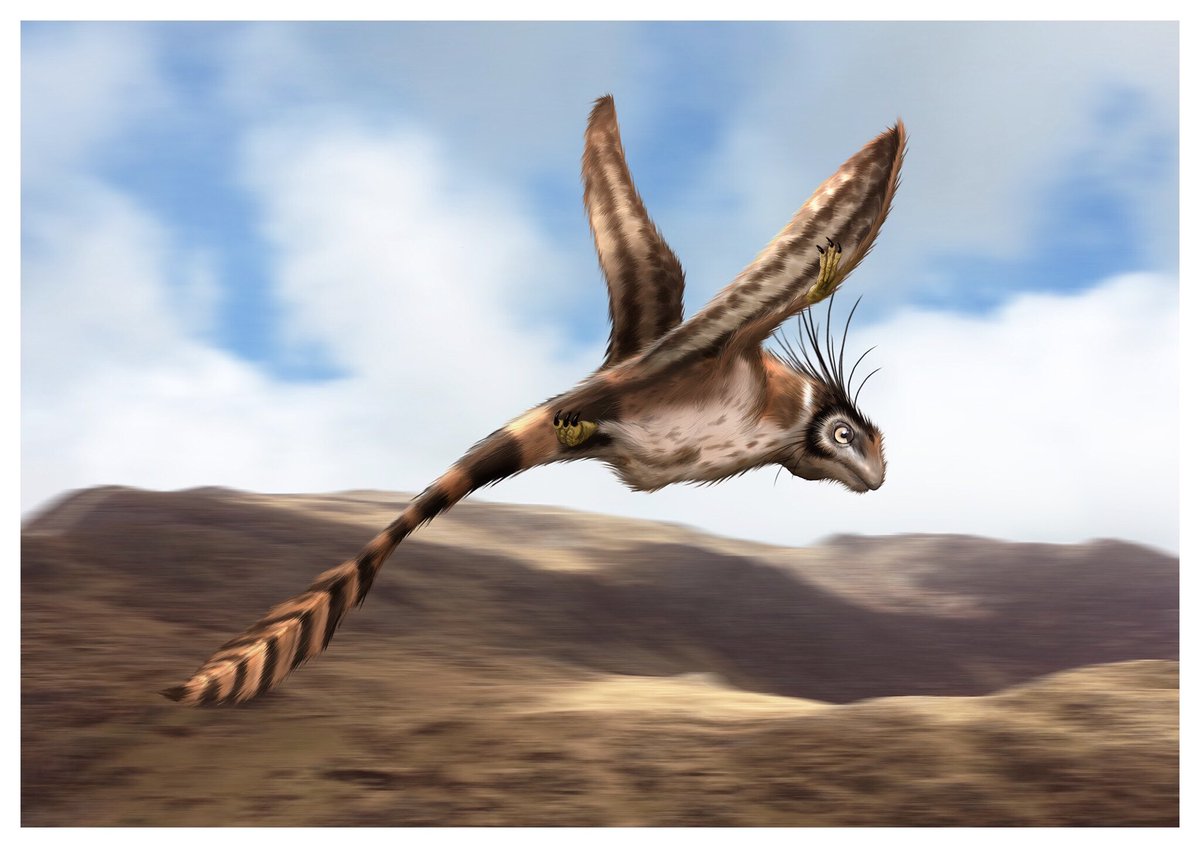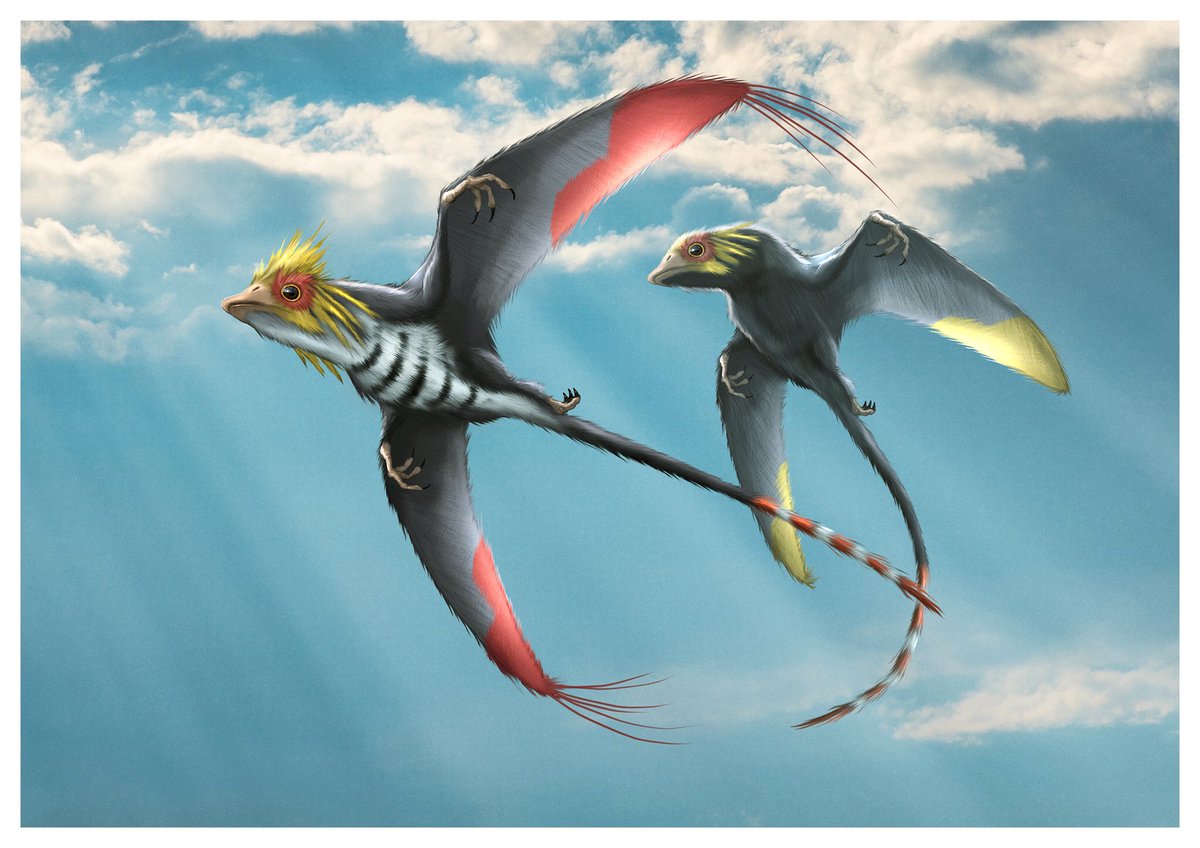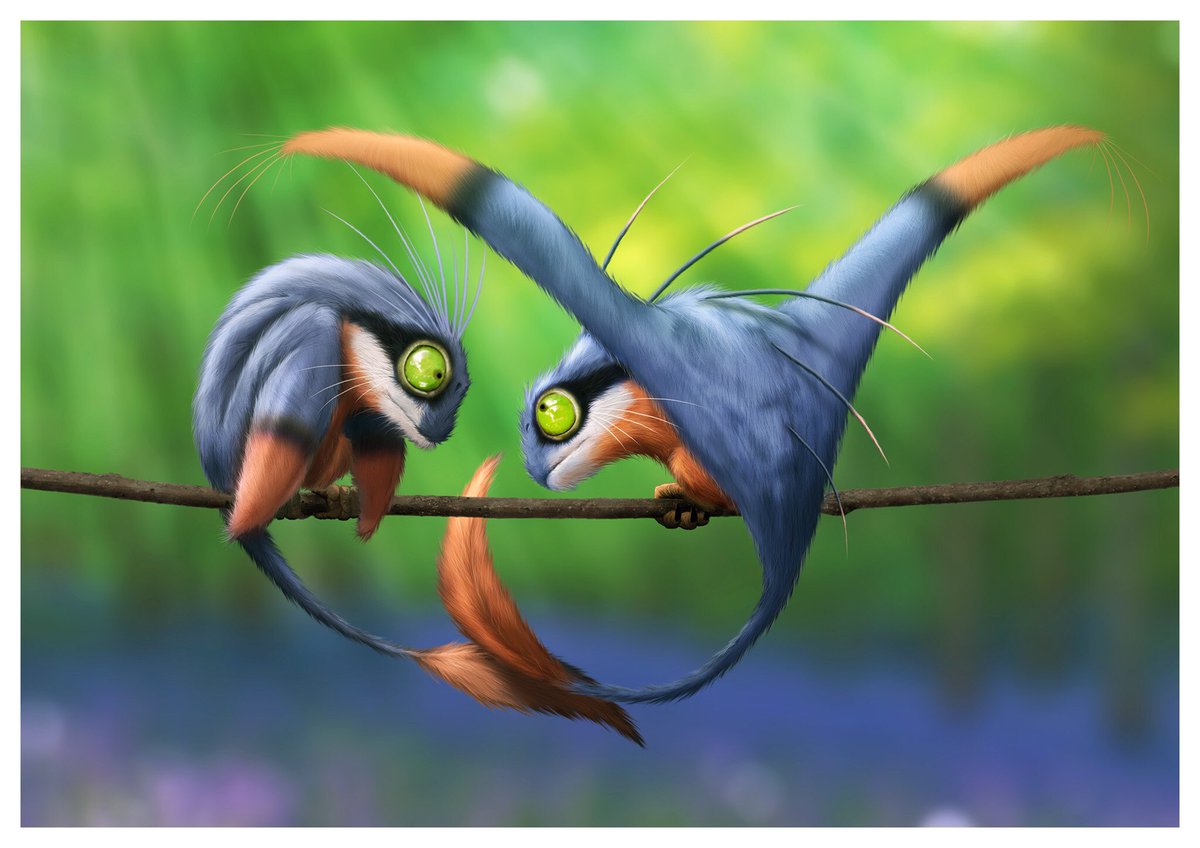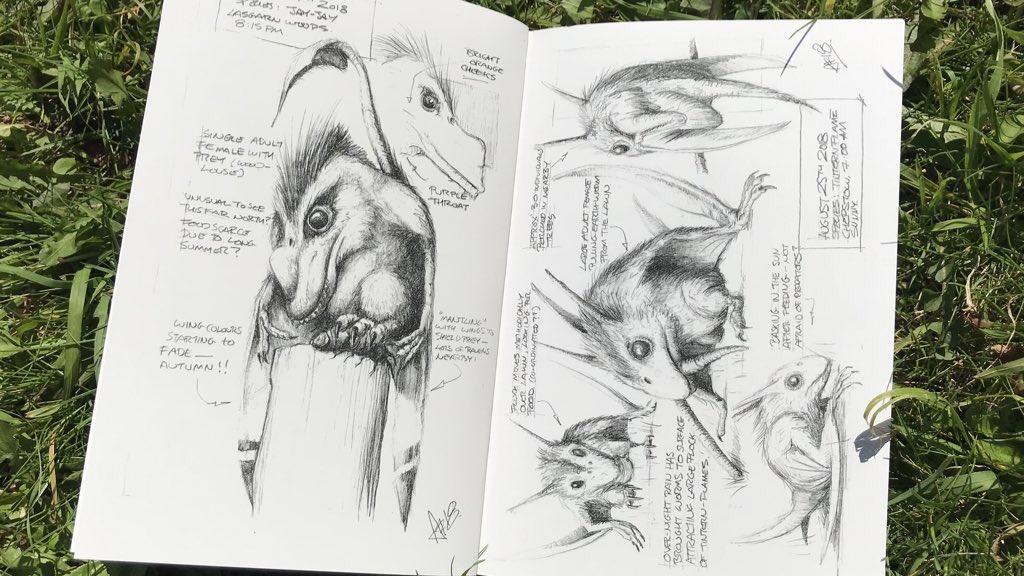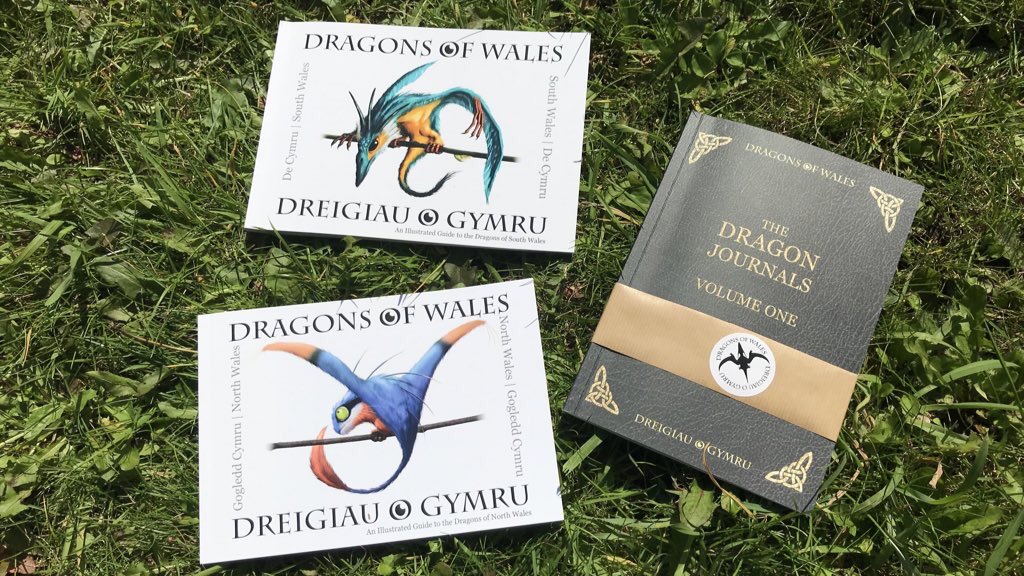An Introduction to the Dragons of Wales (A thread).
Real Welsh dragons are not huge fire-breathing monsters. They are small, elusive and rare creatures, the descendants of long-extinct pterosaurs. Dragons survive, hidden in plain sight, all around us in Wales today. (1/15)
Real Welsh dragons are not huge fire-breathing monsters. They are small, elusive and rare creatures, the descendants of long-extinct pterosaurs. Dragons survive, hidden in plain sight, all around us in Wales today. (1/15)
(2/15) Bethan eni o Aron Elai.
Perhaps one of our most beautiful dragons. They spend their lives next to the rivers that flow through southern Wales. They can be glimpsed plunging into the water in pursuit of fish, a flashing blur of gold and turquoise.
Perhaps one of our most beautiful dragons. They spend their lives next to the rivers that flow through southern Wales. They can be glimpsed plunging into the water in pursuit of fish, a flashing blur of gold and turquoise.
(3/15) Brith Llucas.
Whilst most species build nests, this dragon prefers to make its home inside the trunks of ancient trees. As well as providing shelter, the forest is also the source of the grubs and beetles that the Brith Llucas feeds upon.
Whilst most species build nests, this dragon prefers to make its home inside the trunks of ancient trees. As well as providing shelter, the forest is also the source of the grubs and beetles that the Brith Llucas feeds upon.
(4/15) Zara of Zacmik
A tiny, delicate creature, this dragon has a long, slender head, enabling it to reach the pollen deep inside the light daffodils that bloom across Wales every springtime.
A tiny, delicate creature, this dragon has a long, slender head, enabling it to reach the pollen deep inside the light daffodils that bloom across Wales every springtime.
(5/15) Coal-Crested Lleuad.
A tiny, nocturnal creature, these were the subject of many old Welsh folktales-
being thought of not as dragons, but rather as little magical beings. With glowing amber eyes and shimmering wings, it’s not difficult to see why.
A tiny, nocturnal creature, these were the subject of many old Welsh folktales-
being thought of not as dragons, but rather as little magical beings. With glowing amber eyes and shimmering wings, it’s not difficult to see why.
(6/15) Madarch Monarch
An exceptionally rare dragon that has suffered from the habitat-loss in recent years. Some reports suggest there may be as few as 50 individuals left in northern Wales. It seems likely that this beautiful creature could soon vanish forever.
An exceptionally rare dragon that has suffered from the habitat-loss in recent years. Some reports suggest there may be as few as 50 individuals left in northern Wales. It seems likely that this beautiful creature could soon vanish forever.
(7/15) Tylwyth Teg.
One of the smallest, most colourful and most beautiful of the northern dragons, this fast-moving aerobatic creature can be found chasing mosquitoes in Welsh woodlands. With iridescent wings, they almost seem to glow like fireflies.
One of the smallest, most colourful and most beautiful of the northern dragons, this fast-moving aerobatic creature can be found chasing mosquitoes in Welsh woodlands. With iridescent wings, they almost seem to glow like fireflies.
(8/15) Tryfan Coron
Found only on the steep slopes of Tryfan, this large ambush-predator blends so perfectly with its surroundings that one could walk within a few metres yet never see it. Occasionally spotted performing elaborate aerial displays above the mountain’s summit
Found only on the steep slopes of Tryfan, this large ambush-predator blends so perfectly with its surroundings that one could walk within a few metres yet never see it. Occasionally spotted performing elaborate aerial displays above the mountain’s summit
(9/15) Cawr y Glyderau.
A giant of the mountains, this dragon’s wings, though broad, are barely able to support its weight. It must rely on the strong winds that blow through its mountainous domain to keep it airborne.
A giant of the mountains, this dragon’s wings, though broad, are barely able to support its weight. It must rely on the strong winds that blow through its mountainous domain to keep it airborne.
(10/15) Great Grey Larwm.
A small, coastal dragon that spends more than 20 hrs each day on the wing. Breeding pairs spend their lives together, remaining in the same nest which they repair and improve from year to year.
A small, coastal dragon that spends more than 20 hrs each day on the wing. Breeding pairs spend their lives together, remaining in the same nest which they repair and improve from year to year.
(11/15) Clychau’r Gog.
A charming and gregarious dragon that seems utterly unafraid of people. They will happily take food from your hand or simply use you as a convenient perch from which to survey the bluebell woods where they live.
A charming and gregarious dragon that seems utterly unafraid of people. They will happily take food from your hand or simply use you as a convenient perch from which to survey the bluebell woods where they live.
(12/15) Striped Cleddyf.
This small grey dragon lives mostly unseen in the former mining-towns of the north. It’s most distinctive feature is the tail-spike, used as both a defensive weapon and as a lure to catch its prey.
This small grey dragon lives mostly unseen in the former mining-towns of the north. It’s most distinctive feature is the tail-spike, used as both a defensive weapon and as a lure to catch its prey.
(13/15) Rhedynum.
The prehistoric ancestry of Welsh dragons is very apparent in this species. It builds tube-shaped nests from strips of rotten wood. The remains of these nests can be found littering the forest floor in the autumn months.
The prehistoric ancestry of Welsh dragons is very apparent in this species. It builds tube-shaped nests from strips of rotten wood. The remains of these nests can be found littering the forest floor in the autumn months.
(14/15) The paintings you’ve seen in this thread are the result of many hours spent studying these elusive creatures in the wild. My observations are recorded in field-journals like this.
(15/15) All these dragons, and many, many more can be found in my books. All are available in my Etsy shop. If you’d like to know more, please see my pinned tweet for all the ways you can follow and support my work. I hope you’ve enjoyed this thread.
http://www.etsy.com/uk/shop/dragonsofwales">https://www.etsy.com/uk/shop/d...
http://www.etsy.com/uk/shop/dragonsofwales">https://www.etsy.com/uk/shop/d...

 Read on Twitter
Read on Twitter